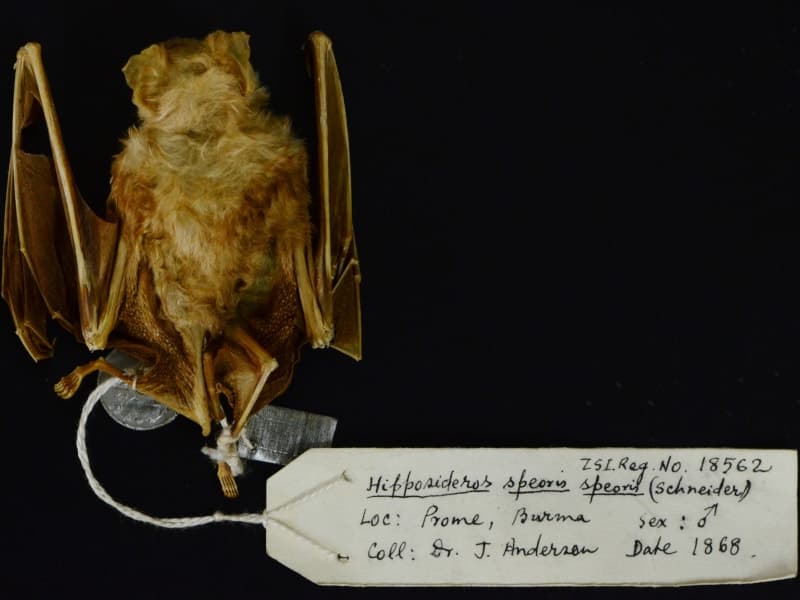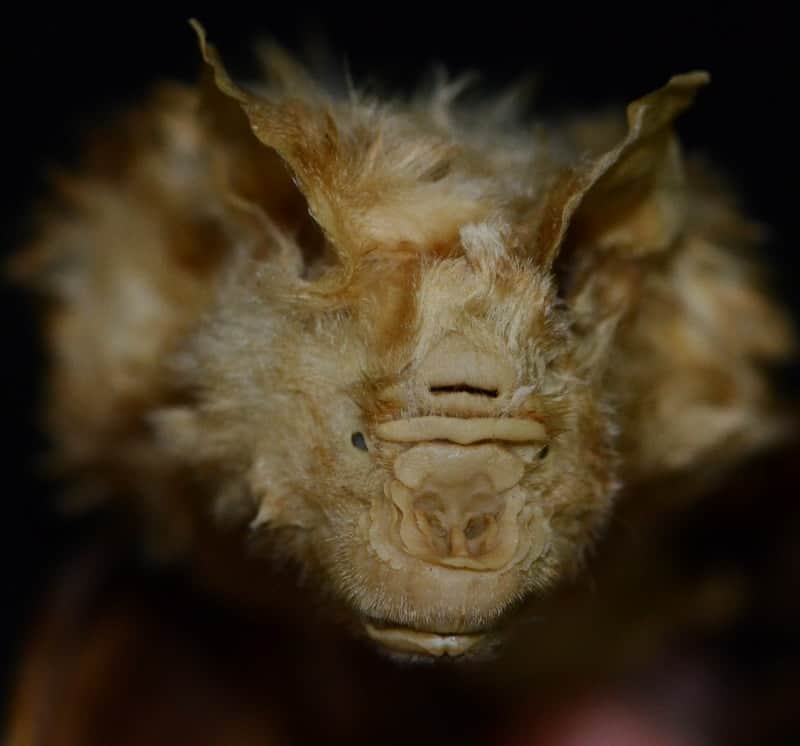Hidden treasure: Old museum specimen turns into first report of Schneider’s leaf-nosed bat in Myanmar
Scientists recently reported and confirmed the presence of Schneider’s leaf-nosed bat in Pyay, Myanmar for the first time. Their findings are based on re-discovering an old museum specimen housed in the National Zoological Collections of the Zoological Survey of India.
By Manokaran Kamalakannan
Schneider’s leaf-nosed bat (Hipposideros speoris) is a small, insectivorous bat, named after German classicist and naturalist Johann Gottlob Schneider who discovered the species in 1800. The bat lives in hill crevices in caves, disused buildings as well as in underground tunnels, old bridges, old forts and palaces. It roosts in colonies ranging from 50 to 1000 individuals with males and females living together for most of the year. Hipposideros speoris is one of 83 leaf-nosed bat species worldwide – so far reported only in India and Sri Lanka.
Old but not forgotten: a 150 year-old bat has a story to tell
Scientists of the Zoological Survey of India (ZSI) in Kolkata, India recently found and re-examined a museum specimen, which was collected in 1868 in Prome, Burma (presently known as Pyay, Myanmar) by mammologist Dr. J. Anderson. Back then, the specimen was tagged as a male Hipposideros speoris speoris and deposited in the National Zoological Collections of the ZSI.

More than a century later, the Indian scientists now confirmed the alcohol-preserved specimen to be Schneider’s leaf-nosed bat, and reported it as a new record in Myanmar. The researchers identified the bat by facial characteristics such as three additional leaflets on the leaf-nose (the outer one being smaller than the other two) and well-developed lappets next to the nostrils. Their findings were recently published in Mammalia.

Although the specimen was collected 150 years ago, it had never been reported and attributed to Myanmar by earlier bat researchers. This new record increases the number of leaf-nosed bat species in Myanmar from 9 to 10, and extends the species’ distribution 1000 km further east from its nearest known locality from India (Bhubaneswar, Odisha). According to the scientists of the ZSI, “Additional field studies in the Pyay area and nearby in Myanmar will improve our knowledge of the bat’s present range, population status and local threats”.
Read the original article here: